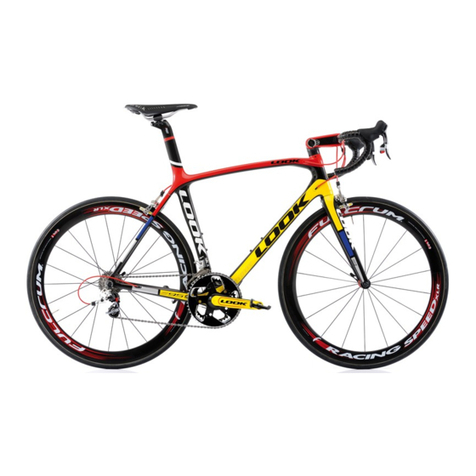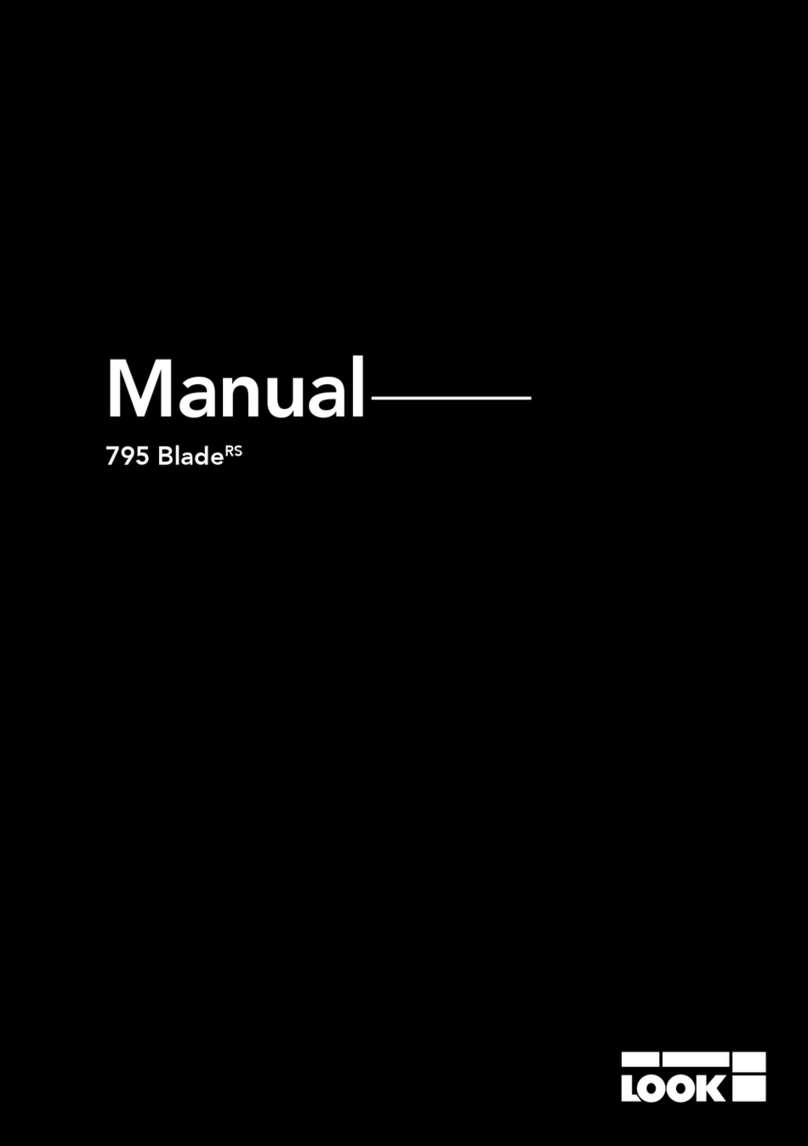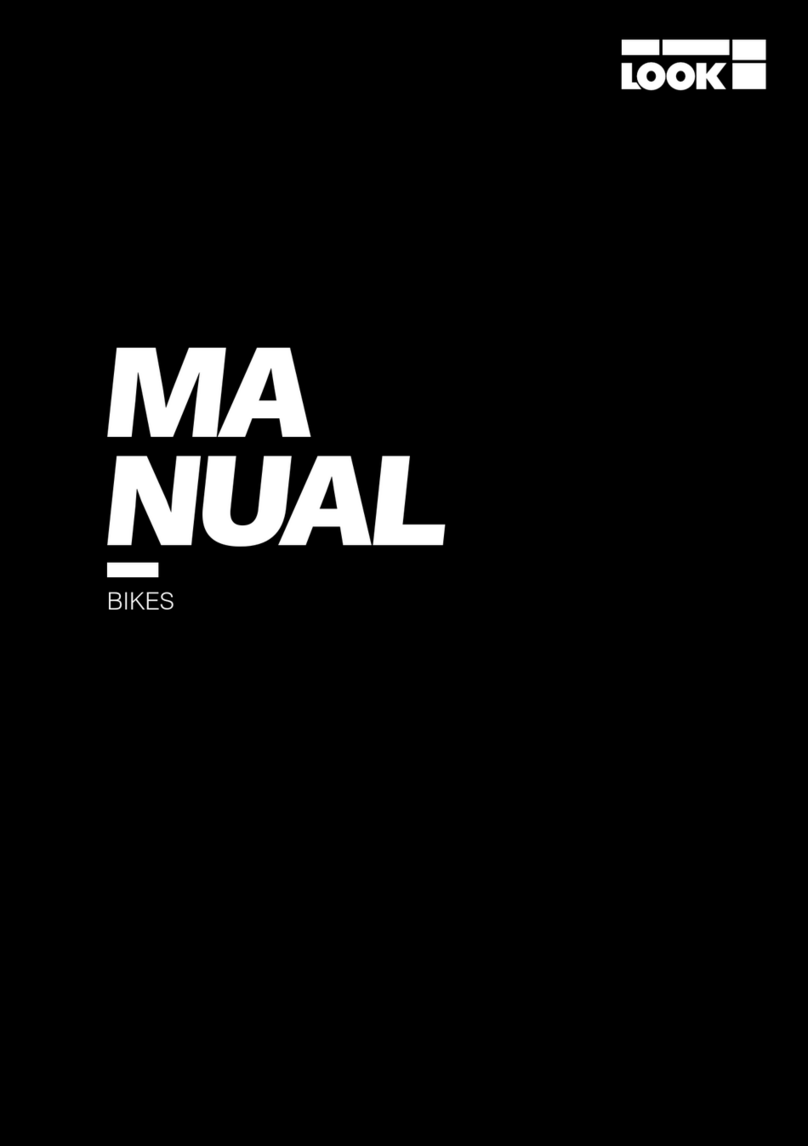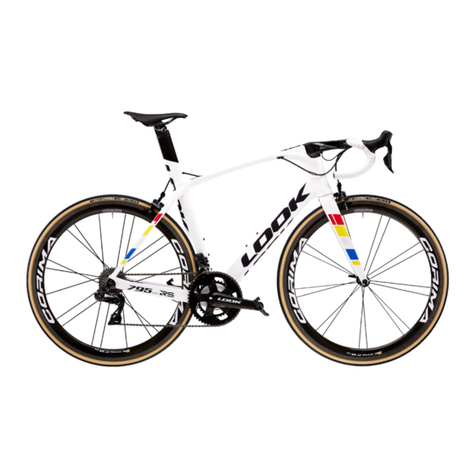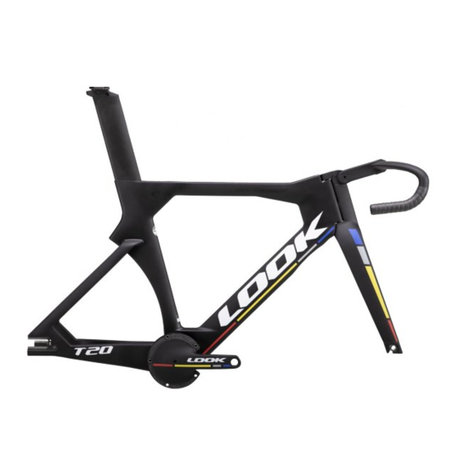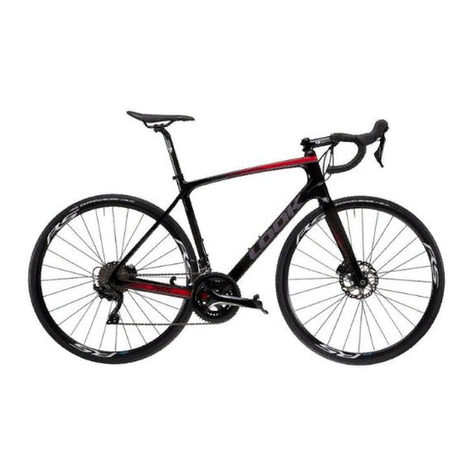
Félicitations !
Vous avez porté votre choix sur un vélo
LOOK.
Nous vous remercions de votre confiance
en nos produits.
En choisissant ce vélo LOOK, vous bénéficiez
d’un produit de haute technologie, de
conception française.
Votre cadre, fourche, pédalier ZED Piste,
potence, cintre et tige de selle sont
identiques à ceux fournis aux grandes
équipes professionnelles, sont contrôlés
durant toute leur fabrication et vous
apporteront entière satisfaction.
Nos produits sont conformes aux différentes
normes européennes et internationales en
vigueur.
PRÉSENTATION DU PRODUIT
Votre cadre a été confectionné suivant les
spécifications du bureau d’études LOOK. De
nombreuses heures sont nécessaires à sa
fabrication.
Votre cadre est livré monté avec son pédalier
ZED spécialement développé pour la piste,
sa fourche déportée (brevet LOOK) et une
potence carbone piste ainsi qu’un cintre
aéro carbone. Le cadre est livré aussi avec
sa tige de selle profilée équipée d’un chariot
en carbone.
Votre cadre est validé UCI sous la référence :
LOOK-PT91-TR, n°40863
Nous vous conseillons pour le montage
des accessoires de vous adresser à un
professionnel.
Avant toute utilisation, lisez l’intégralité
des instructions, respectez les conseils
donnés afin de profiter pleinement des
atouts de ce produit de haute qualité.
LOOK se réserve la possibilité de changer
les spécifications du produit et sans avis
préalable dans le but de l’améliorer.
FR
4
Pour le montage du pédalier ZED PISTE,
merci de vous reporter à la notice spécifique
à ce produit.
